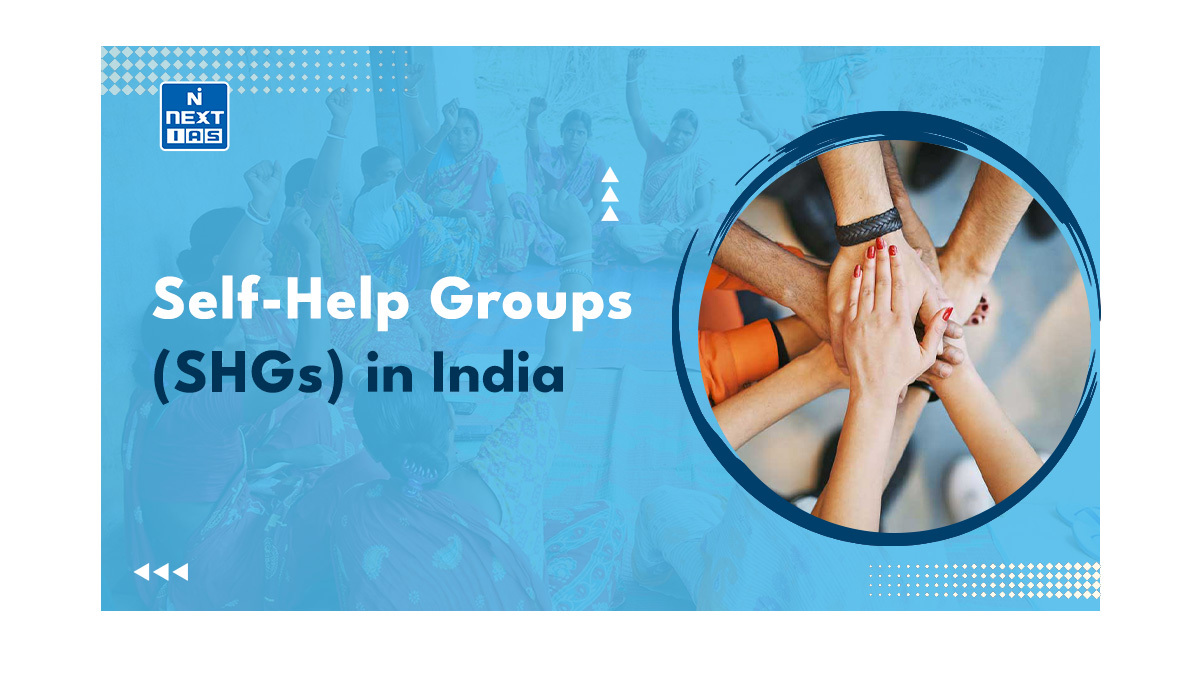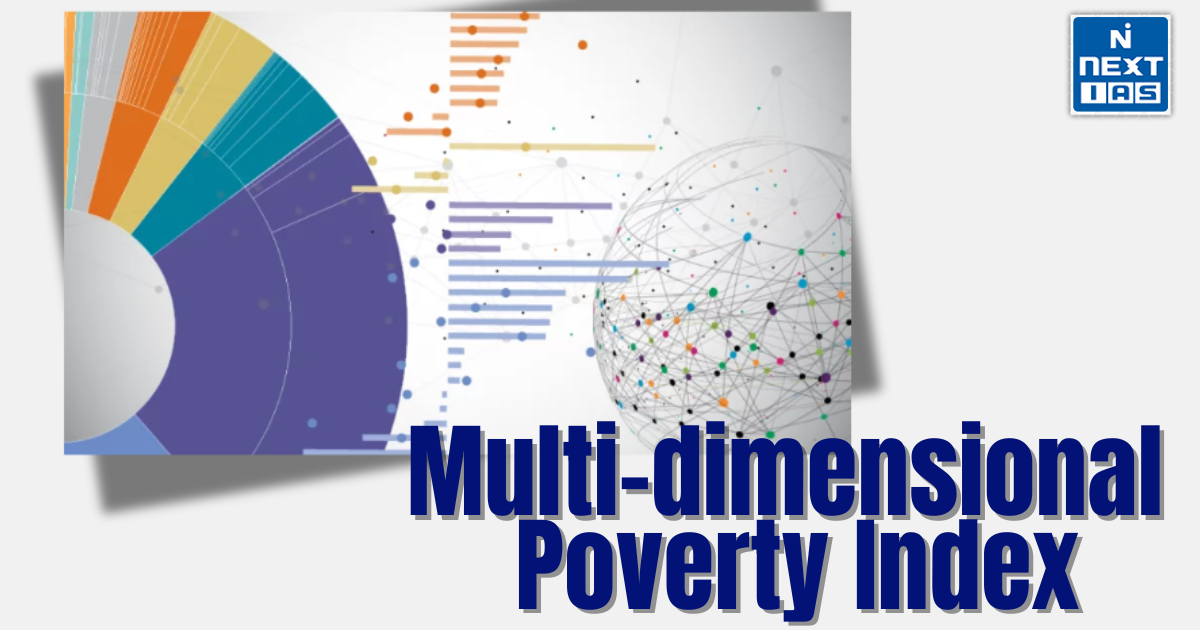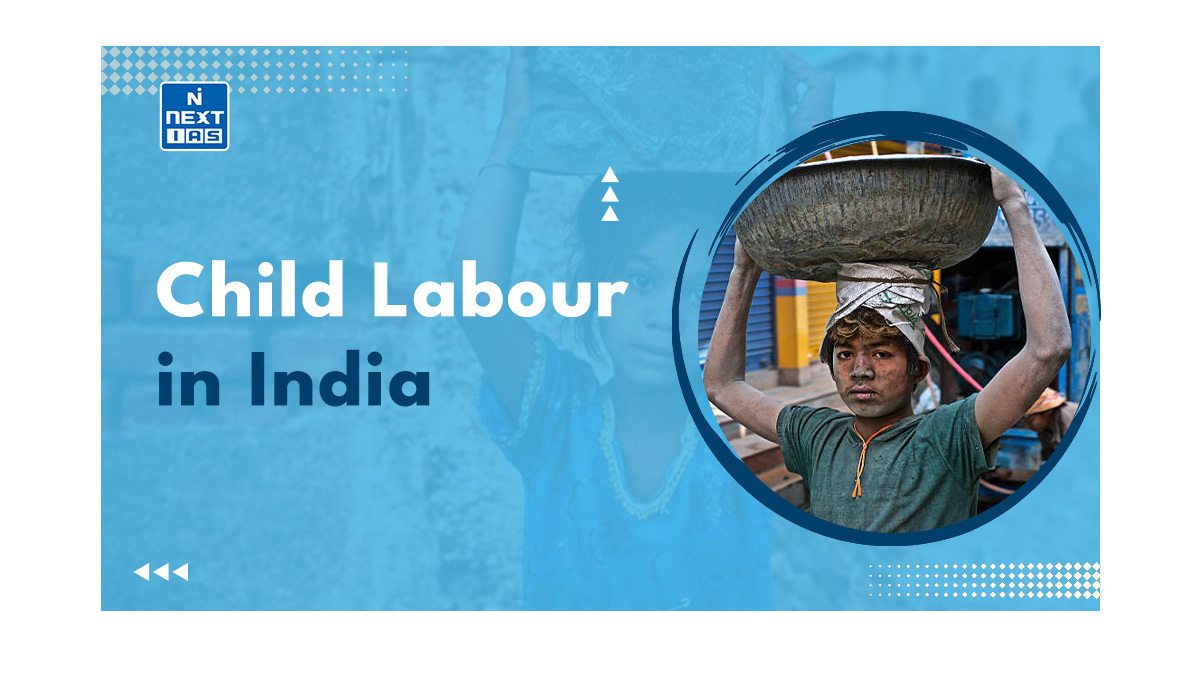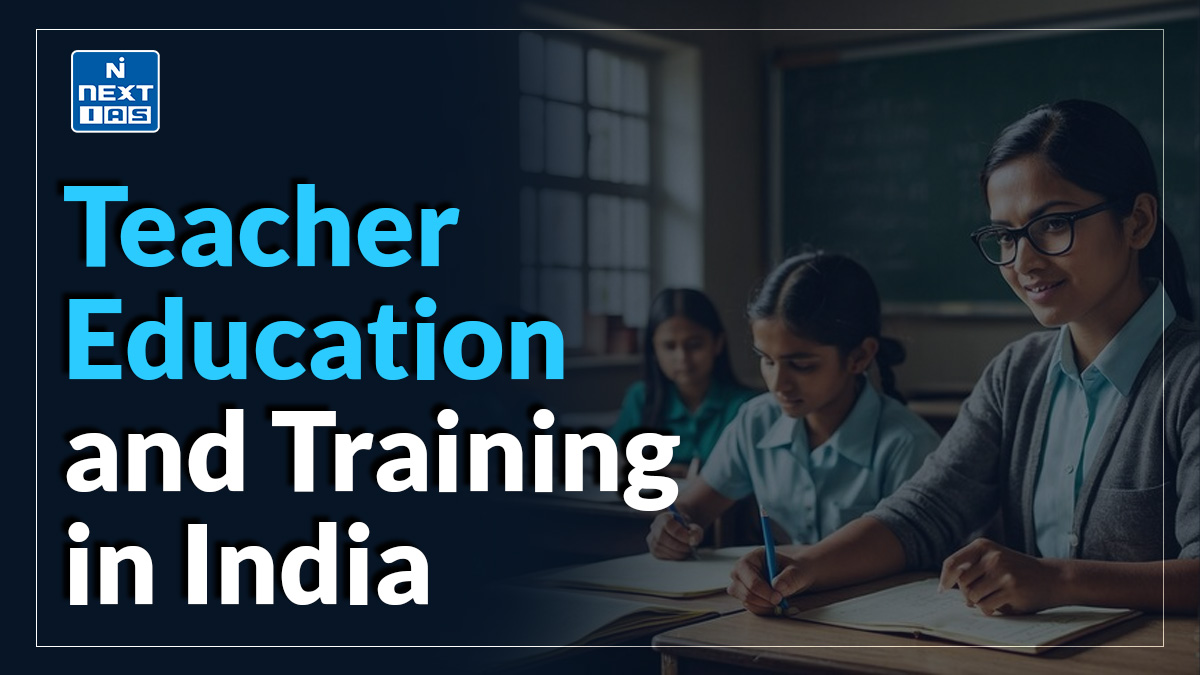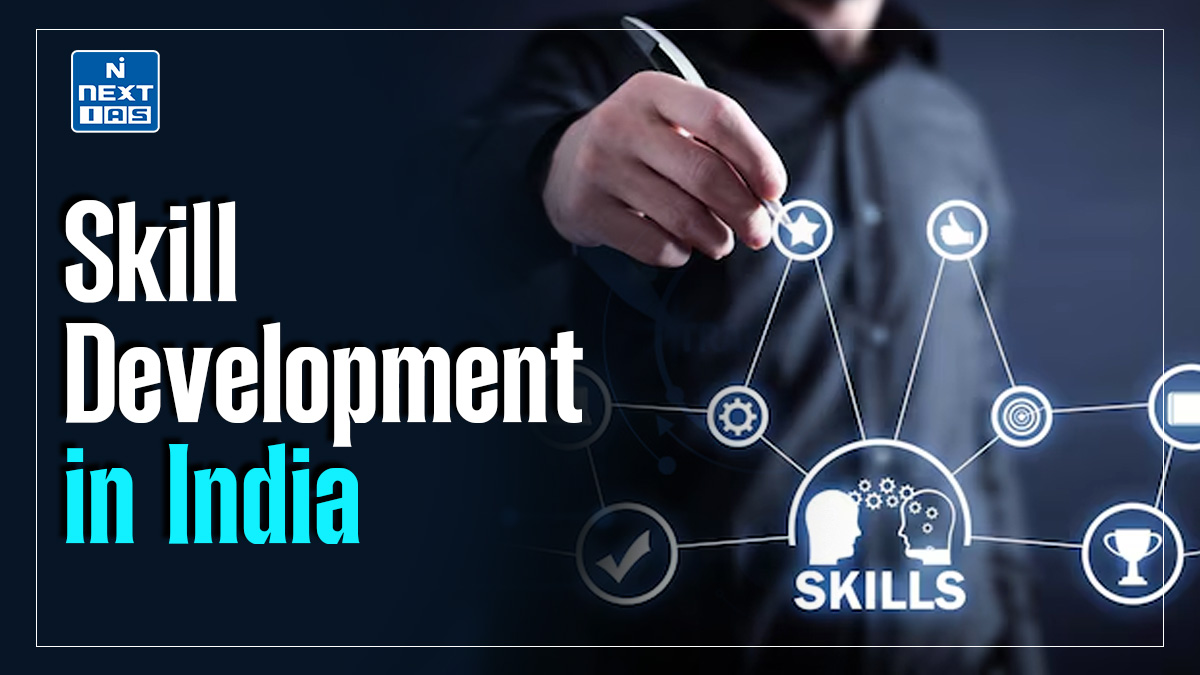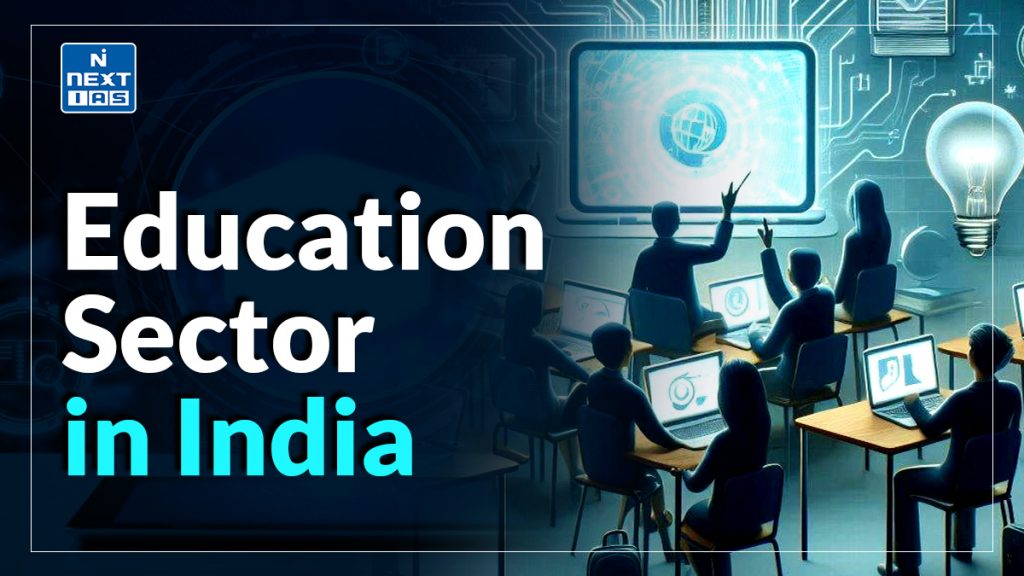
The education sector in India encompasses a vast system ranging from foundational schooling to advanced higher education, serving as a cornerstone for national growth. Its importance lies in fostering social equity, economic development, and individual empowerment, making it a key driver of human progress. This article aims to study in detail the challenges, achievements, and transformative reforms in India’s education sector, encompassing school education, higher education, and its contribution to human development.
About Education Sector in India
- Education is the cornerstone of a nation’s development, shaping human capital and fostering innovation and economic growth.
- In India, the education sector has undergone transformative changes since independence, aiming to address the diverse needs of its population.
School Education in India
Structure and Overview
The school education system in India is divided into the following stages:
- Primary Education (Grades 1-5): It focuses on foundational literacy and numeracy skills.
- Upper Primary (Grades 6-8): It builds on foundational knowledge, introducing subjects like science, mathematics, and social studies.
- Secondary Education (Grades 9-10): It prepares students for board examinations with a focus on specialized subjects.
- Senior Secondary (Grades 11-12): It offers subject streams such as arts, science, and commerce, paving the way for higher education.
Government Initiatives
There are various Education schemes in India as
- Right to Education (RTE) Act, 2009: It ensures free and compulsory education for children aged 6-14 years.
- Samagra Shiksha Abhiyan: It integrates schemes like Sarva Shiksha Abhiyan and Rashtriya Madhyamik Shiksha Abhiyan to enhance quality and access.
- Mid-Day Meal Scheme: It aims to improve nutritional levels and attendance among students in government schools.
Above are the Government initiatives in education sector in India.
Challenges in School Education
- Quality of Education: Despite increased enrollment, learning outcomes remain a concern.
- Infrastructure: Many schools face shortages of classrooms, toilets, and drinking water.
- Dropout Rates: Socio-economic factors contribute to high dropout rates, especially among girls.
Higher Education in India
Structure and Institutions
- Universities: These include central, state, deemed, and private universities.
- Colleges: It is affiliated with universities, offering undergraduate and postgraduate courses.
- Technical and Professional Institutes: It is governed by bodies like AICTE (engineering) and MCI (medical education).
Key Developments
- National Education Policy (NEP) 2020: It proposes multidisciplinary education, increased GER (Gross Enrollment Ratio), and emphasis on research and innovation.
- Digital Initiatives: Platforms like SWAYAM and National Digital Library aim to make education accessible to all.
- Skill Development Programs: Institutions like ITIs and Polytechnics bridge the gap between education and employment.
Challenges in Higher Education
- Accessibility and Affordability: Higher education remains out of reach for many in rural and low-income groups.
- Quality and Accreditation: Issues with faculty quality and lack of accreditation for many institutions.
- Research and Innovation: Limited funding and infrastructure for advanced research.
Human Development and Education
Role of Education in Human Development
Education is integral to achieving the Sustainable Development Goals (SDGs), particularly SDG 4: Quality Education. It contributes to:
- Economic Growth: An educated workforce drives productivity and innovation.
- Social Equity: Education reduces inequalities, empowering marginalized communities.
- Health Outcomes: Awareness of health practices and access to information improve overall well-being.
India’s Progress
- Human Development Index (HDI): Education is a key component of India’s HDI ranking.
- Gender Parity: Initiatives like Beti Bachao, Beti Padhao promote gender equality in education.
- Adult Education: Programs like Saakshar Bharat focus on improving literacy rates among adults.
Solutions and Recommendations
- Investment in Infrastructure: Building well-equipped schools and colleges in rural and urban areas.
- Teacher Training: Enhancing teacher quality through continuous professional development.
- Technology Integration: Expanding digital classrooms and e-learning resources.
- Public-Private Partnerships: Collaborating with private players to improve access and quality.
- Focus on Lifelong Learning: Encouraging skill development and vocational training for all age groups.
Conclusion
The education sector in India is both a challenge and an opportunity. With strategic interventions, innovative policies, and collaborative efforts, India can harness its demographic dividend and ensure inclusive, equitable, and quality education for all. By addressing the gaps and building on its strengths, the nation can pave the way for a brighter, more prosperous future.
FAQs
How can the service sector reduce educated unemployment in India ?
India’s service sector can reduce educated unemployment by expanding industries like IT, finance, healthcare, and tourism. Skill development programs, vocational training, and internships can bridge the education-employment gap. Promoting entrepreneurship, remote work opportunities, and government-backed initiatives in digital services can create jobs, ensuring better alignment of skills with market demands.
How is the education sector in India?
India’s education sector is vast and diverse, with significant progress in literacy and school enrollment. It faces challenges like unequal access, outdated curricula, and quality disparities. Initiatives like NEP 2020 aim to modernize education, emphasize skill development, and promote inclusivity, focusing on making learning holistic, affordable, and globally competitive.
What are the 5 points of the education system in India?
– Structure: Follows a 10+2+3 system with primary, secondary, and higher education.
– Diversity: Offers public, private, and informal education across rural and urban areas.
– Government Initiatives: Schemes like Sarva Shiksha Abhiyan promote universal education.
– Challenges: Faces issues of access, quality, and equity.
– Reforms: NEP 2020 emphasizes holistic, skill-based, and inclusive learning.
What is 5 3 3 4 in NEP?
The 5+3+3+4 structure in India’s NEP 2020 represents a new school education model:
– 5 years: Foundational Stage (Preschool + Grades 1-2) for play-based learning.
– 3 years: Preparatory Stage (Grades 3-5) for activity-based learning.
– 3 years: Middle Stage (Grades 6-8) for experiential learning.
– 4 years: Secondary Stage (Grades 9-12) for critical thinking and specialization.
What do you mean by the education sector?
The education sector encompasses all institutions, organizations, and systems involved in delivering learning and training. It includes schools, colleges, universities, vocational training centers, and edtech platforms. The sector focuses on skill development, knowledge dissemination, and research, contributing to personal growth, social progress, and economic development in a society.
What do you understand about innovation within the education sector ?
Innovation in the education sector refers to implementing new ideas, methods, or technologies to enhance learning experiences. This includes integrating digital tools, personalized learning, creative teaching methods, and skill-based curricula. Innovation aims to make education more engaging, accessible, and effective, preparing students for modern challenges and fostering lifelong learning.
What is vocational education system in india ?
India’s vocational education system provides skill-based training to enhance employability in specific trades or industries. Offered through institutions like ITIs, polytechnics, and schools, it focuses on fields like manufacturing, healthcare, and technology. Recent initiatives, like Skill India and NSDC, aim to align vocational education with market demands and global standards.
what is evolution of education system in india ?
India’s education system evolved from ancient Gurukuls emphasizing holistic learning to medieval madrasas and colonial English systems focused on formal education. Post-independence, initiatives like free primary education, literacy campaigns, and higher education expansion emerged. The NEP 2020 marks a modern shift toward inclusive, skill-based, and technology-driven education, blending tradition with innovation.
